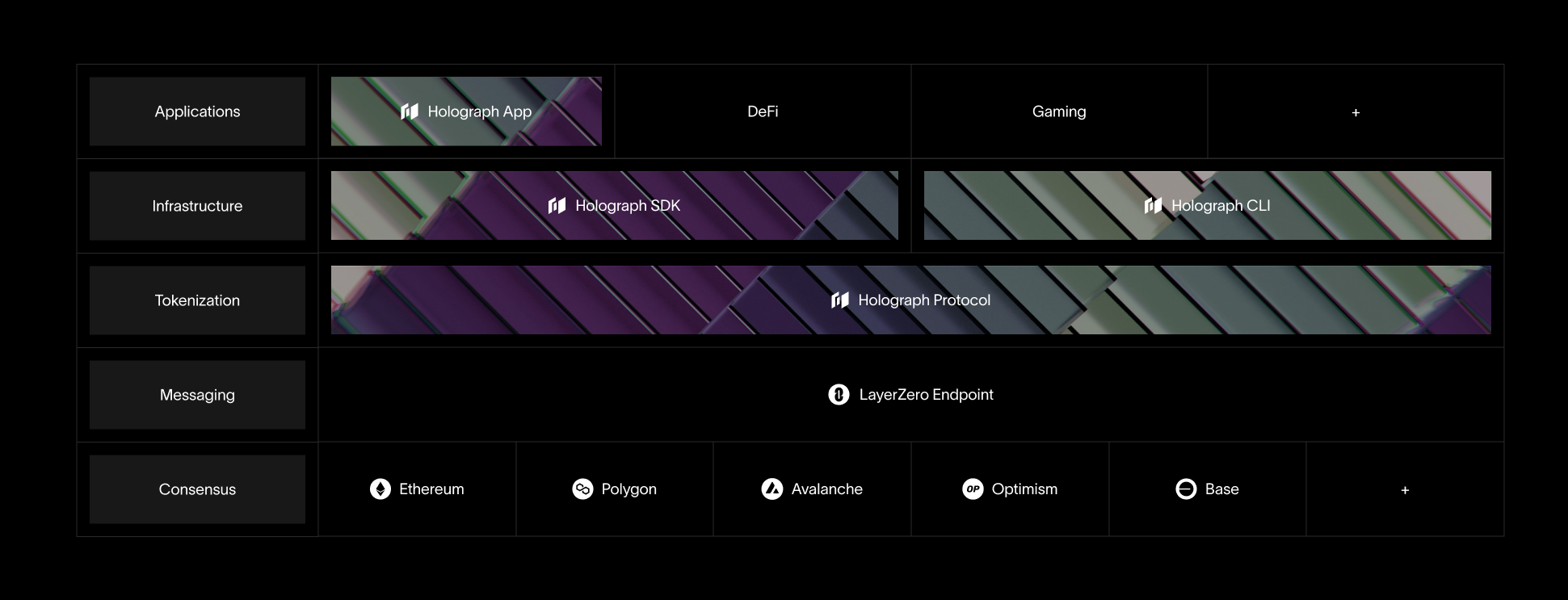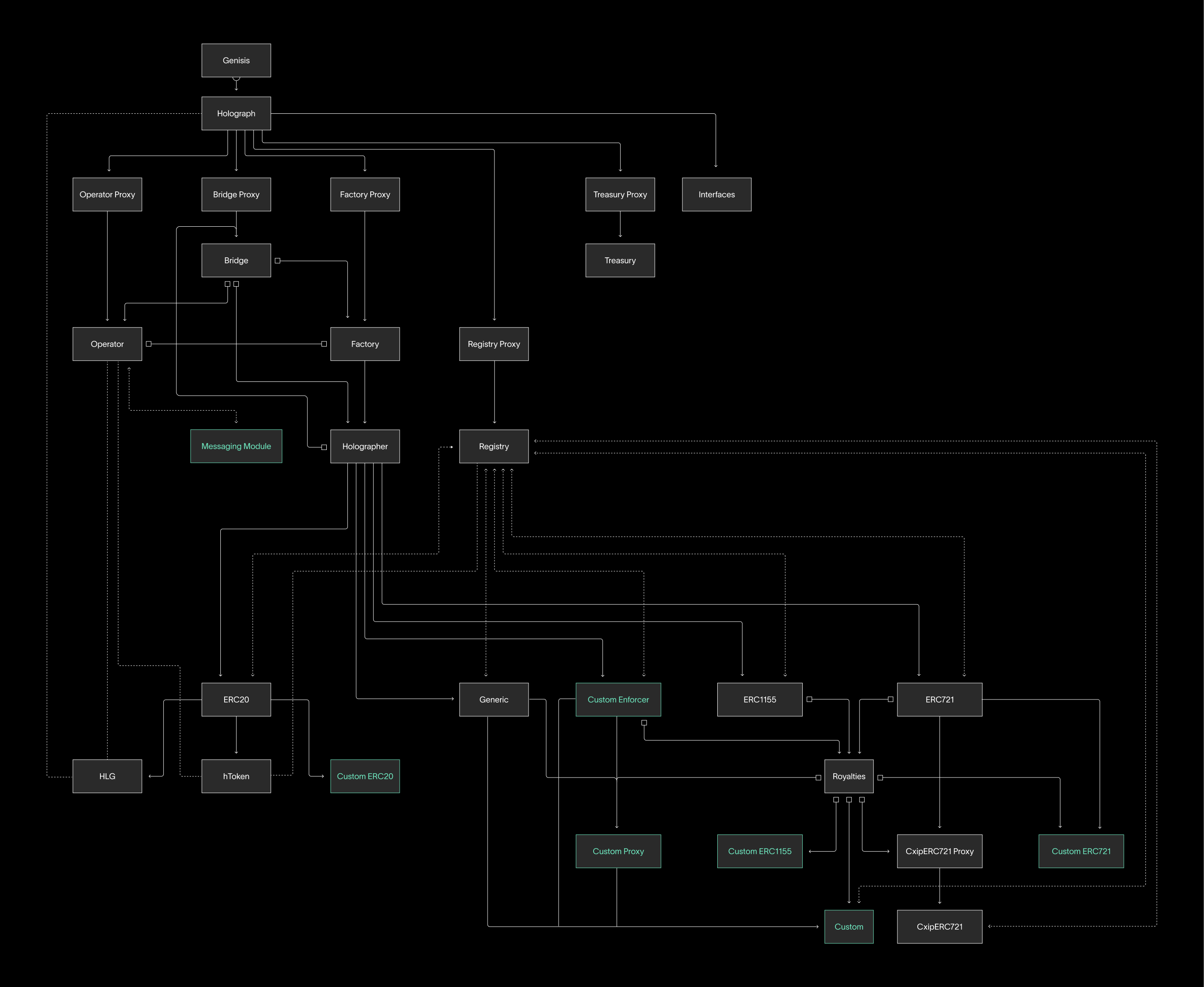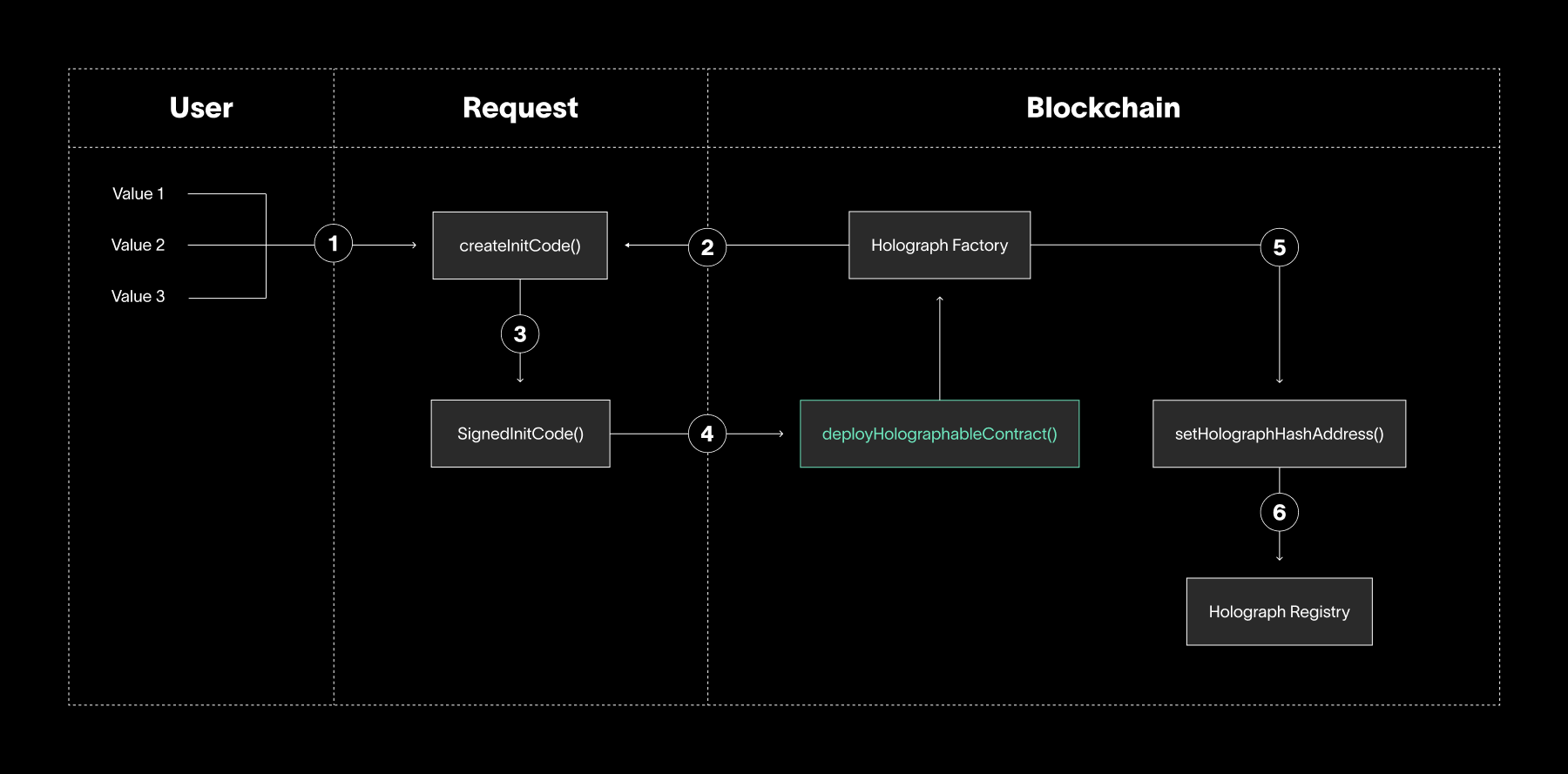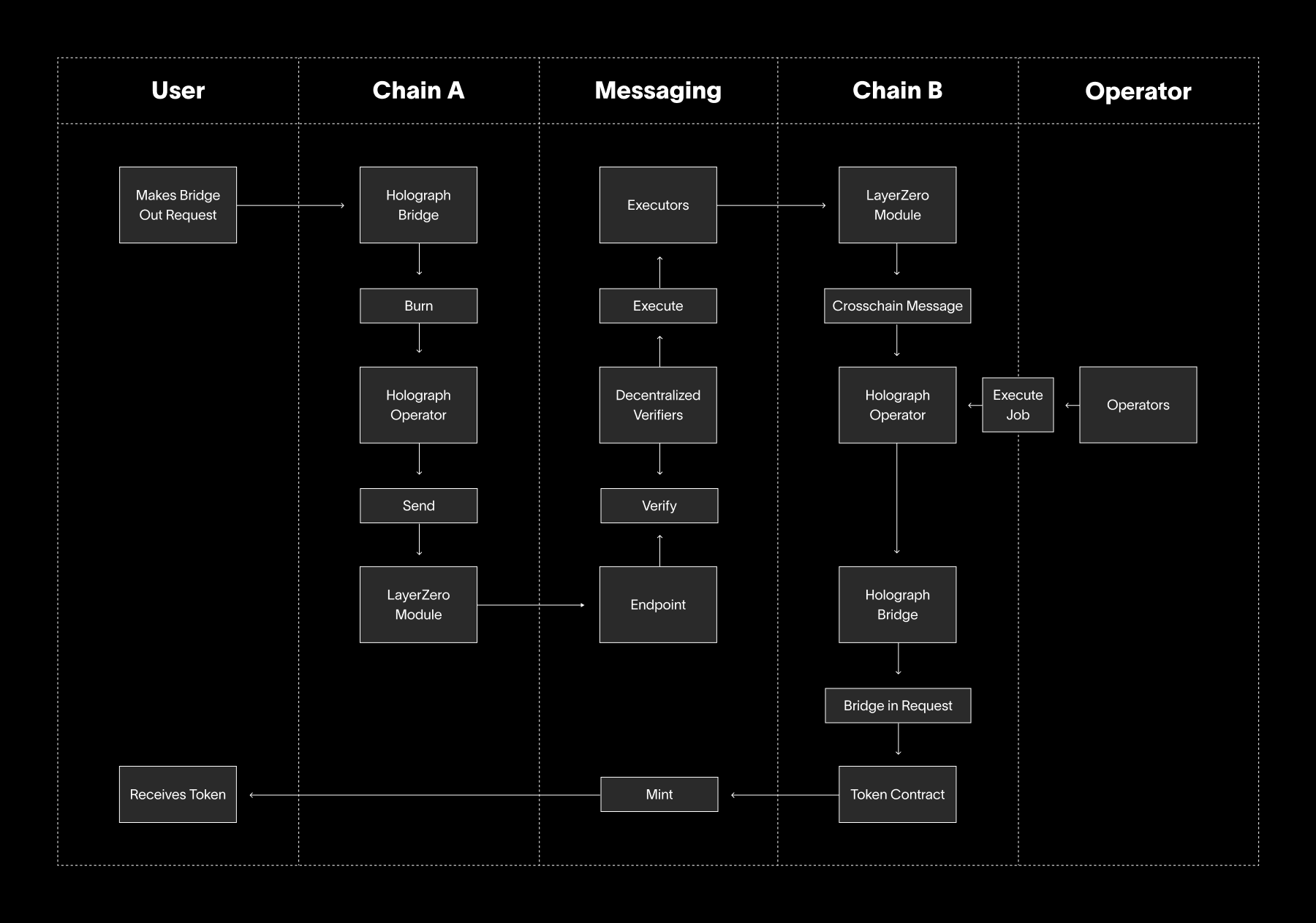Overview
Introduction
Holograph facilitates use of a single, unique contract address on all EVM blockchains. Using a strictly enforced deployment process, genesis contracts are seeded across chains, allowing for all subsequent contracts to be derived from them. With this approach, contract addresses remain the same no matter where they are deployed, allowing the protocol to support all existing and future EVM chains. For non-EVM chains, the protocol may be adapted to facilitate tokenization in adherence to their respective execution environments.
Ecosystem Stack
Holograph is the tokenization layer for the omnichain ecosystem, enabling liquidity to interoperate seamlessly across the stack.

Protocol Stack
Holograph is comprised of 10 primary elements, serving as the foundational components that drive the functionality of the entire system.

Omnichain Capabilities
Holograph provides a complete solution for asset issuers with customizable infrastructure for omnichain token creation, deployment, and transport.
- Create Standard Tokens: Deploy natively composable fungible and non-fungible tokens that are burned on the source chain and then minted on the destination chain.
- Create Custom Tokens: Deploy brand new custom token implementations that can interoperate in unique ways across multiple execution environments.
- Modify Existing Tokens: Make existing tokens omnichain by locking the existing tokens on a source chain and then minting omnichain tokens on the destination chain.
Deploy Contract Architecture
Holograph facilitates the use of a single, unique contract address and token ID across all blockchains, making them the definitive identifying characteristics of the token, while ensuring secure asset transfers between blockchains.

Transfer Token Architecture
Holograph works by burning tokens on the source chain, sending a message via a messaging protocol to the destination chain, and then reminting the same number of tokens to the same contract address. This unifies liquidity, eliminates slippage, and preserves fungibility across blockchains.

The Holographic Transfer Process (HTP) includes the following steps:
Chain A
- User creates a bridge-out request on
HolographBridge HolographBridgecalls the token contract’s burn functionHolographBridgepasses the bridge-out request toHolographOperatorHolographOperatorpackages the message payloadHolographOperatorsends the message payload toLayerZeroModuleLayerZeroModuleselects the correct cross-chain path by matching the LayerZero endpoint ID with the Chain B ID and forwards the message payload toLayerZeroEndpoint
Messaging
- The message payload is delivered to LayerZero’s Decentralized Verifier Network (DVN)
- If valid, the message payload is forwarded to
LayerZeroExecutor
Chain B
LayerZeroExecutorsends the message payload back toLayerZeroModule- If valid,
LayerZeroModulesubmits the message payload toHolographOperator - Operators (which are off-chain agents) listen for, select, and execute bridge jobs. Selection is random with fallback operators in the event the selected operator fails to execute the job
- Operator executes the bridge job on
HolographOperator - The execute bridge job function extracts the bridge-in request message payload and forwards it to
HolographBridge HolographBridgevalidates that the incoming token contact exists on Chain B- If valid,
HolographBridgecalls the token contract’s bridge-in request, which mints the token on Chain B